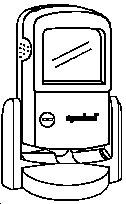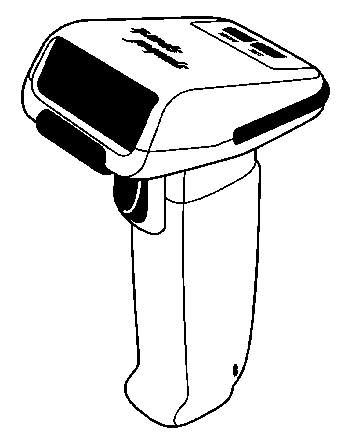

| Products | All About Bar Codes | Search | Y2K Information |
| Printers | Data Collection | Software | Point of Sale |
What's a Bar Code?
![]() Lasers
Lasers
 Hand
held laser scanners are the most expensive of the scanning
devices, but offer the largest depth of field making them an
appropriate choice for a wide variety of non-contact
applications.
Hand
held laser scanners are the most expensive of the scanning
devices, but offer the largest depth of field making them an
appropriate choice for a wide variety of non-contact
applications.
How Lasers Work Hand held laser scanners use a laser diode to create a scan line by projecting a beam of energy off a rotating prism or oscillating mirror. The beam is reflected out the scanner window onto the bar code, where light energy from the bars and spaces is reflected back to the scanner, collected on a mirror, focused, and read by a photodetector. The resulting signal may then be read using decoding software within the scanner or at the terminal or host.
Lasers have their advantages over CCDs. They're not bar code width-dependent. Depth of field is significantly greater and lasers can work in direct sunlight because the amount of reflected light is much greater and much more defined; the signal return is in a defined pathway. Also, lasers don't have to touch the bar code. There's a visible scan line which allows for larger bar code reading.
Laser technology is an excellent choice for non-contact applications, and the only choice for applications that require reading distances of a foot (.3048m) or more. Available in both hand held and fixed mount form, lasers are easy to use, read a wide variety of code densities, and allow for easy reading of bar codes from irregular surfaces or throughglass. Because they are non-contact devices, lasers will not wear out repeatedly scanned labels.
 Hand-held lasers can scan media in hard to
reach places, on curved surfaces, or through plastic. They also
add longer label life to your application.
Hand-held lasers can scan media in hard to
reach places, on curved surfaces, or through plastic. They also
add longer label life to your application.
The light generating medium in first-generation moving beam laser installation was a Helium-Neon laser tube. In the past few years semiconductors capable of producing laser light have been incorporated in most laser products..
Laser diodes, both visible and infrared, are in a package about the size of an LED. Compared to the gas tube used to create Helium Neon lasers, the laser diode is much smaller, requires significantly less power, and is more durable. This makes these hand-held devices suitable for portable data collection terminals or for fixed-station decoders that are powered from the terminal.
 Fixed-mount lasers allow
both hands to be free for use in handling product or paper. In
addition, self-triggering mechanisms allow these lasers to
operate without human intervention.
Fixed-mount lasers allow
both hands to be free for use in handling product or paper. In
addition, self-triggering mechanisms allow these lasers to
operate without human intervention.
Fixed-mount lasers can be mounted on a table top or alongside a conveyer belt for scanning labels on products as they move past the scanner. Fixed mount conveyor lasers have varying degrees of automation: from being able to scan labels in any orientation passing by at high speed to scanning one lable at a time on a slow moving conveyor.
The two disadvantages inherent in laser scanning are durability and cost. Because lasers use both moving parts and mirrors, they are not as rugged as CCDs or wands. The reality is that hand held scanners will be dropped no matter how diligent the operator, and even if the internal parts do not break, misalignment of the laser can easily reduce performance or render the scanner unusable. Finally, laser technology is the most expensive, both in terms of initial purchase price and product life costs.